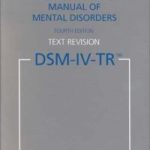Mental health articles
OF mental health care and mentally ill
specific phobia diagnosis code
specific phobias diagnosis
The DSM diagnosis of specific phobia refers to a heterogeneous collection of fears and/or avoidance of a broad range of specific objects or situations. Recent attempts to make sense of the heterogeneity centered on trying to identify subgroups of specific phobias that share characteristics. Thus, some researchers distinguished blood and injury fears from other phobias because of the unique physiological response accompanying the former.
Similarly, factor-analytic studies of agoraphobics’ fears often identify a claustrophobia factor, suggesting that claustrophobia may have much in common with agoraphobic fears. In a recent factor analysis, three subtypes of fears were identified: situational phobias, animal phobias, and mutilation phobias. Based on these considerations, the DSM-IV has distinguished four subtypes of specific phobia: animal fears, natural environment fears, blood-injection-injury fears, and situational fears (e.g., flying, small spaces). However, despite the implication of independence among fears, at least one study showed that people with one specific phobia are likely to be comorbid for other specific phobias, calling into question the ‘‘specificity’’ of specific phobias.
Not surprisingly, given their heterogeneity, specific phobias show varied diagnostic reliability estimates among studies. Mannuzza et al. found a kappa of .29, whereas DiNardo et al. found a kappa of .82. It should be noted that studies to date have used DSM-III-R criteria in which subtypes of specific phobias were not distinguished. It remains to be seen whether the specification of subtypes in DSM-IV improves the diagnostic reliability.
Post Footer automatically generated by wp-posturl plugin for wordpress.
More from my site
Tags: diagnosis, specific phobia







Leave a Reply